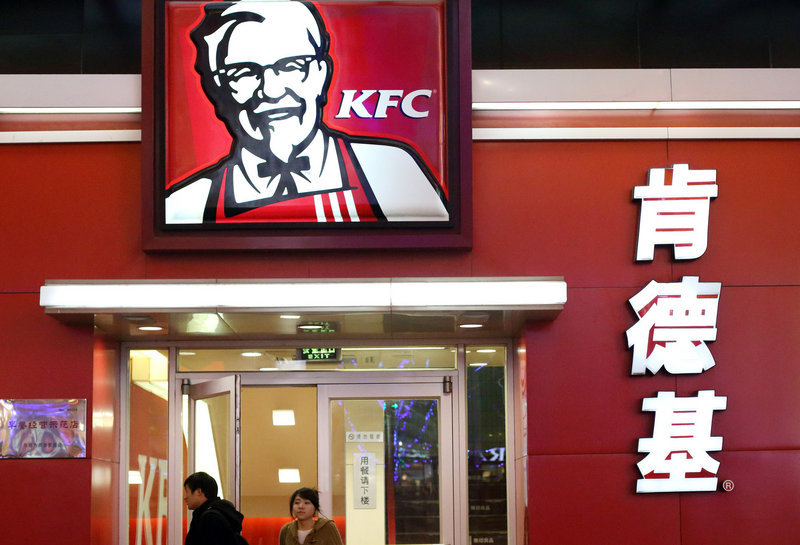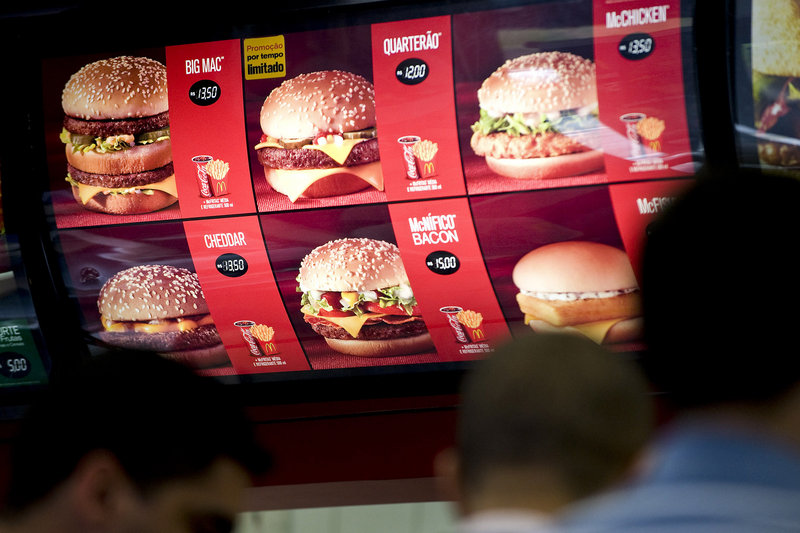CHICAGO – Fast food and expanding waistlines are not just an American health concern.
Even as McDonald’s, Yum Brands and Domino’s Pizza work to placate anti-obesity advocates at home, they’re taking high-calorie offerings to other parts of the globe and hooking a new generation in emerging markets.
Their target customers, often part of a rising middle class with a more sedentary lifestyle, are in turn putting on the pounds.
Eating less home cooking and consuming more processed snacks and sugary drinks, the average man is gaining weight in Mexico, Brazil and Chile faster than the worldwide average, according to the Waistline Index compiled by Bloomberg.
The women are too, except in Brazil, where they are holding to the global average. In all three countries, fast food is a relatively new option.
The foreign influx is in some ways similar to the one 300 years ago, when the conquistadors brought smallpox and measles to native civilizations in Central and South America, said Tim Lobstein, director of policy and programs at the International Association for the Study of Obesity in London.
“The parallel now is the big transnational corporations also setting foot in these remote areas and bringing non-communicable diseases,” such as obesity, diabetes and heart disease, Lobstein said in an interview.
Increases in these diseases, the rising cost of medical care and worries about childhood obesity may force the food companies to change some practices abroad and push them into new markets to achieve their desired growth.
Already, legislators in Brazil are considering restrictions on marketing by fast-food companies.
Men in Mexico gained an average of more than 15 pounds from the opening of the first U.S. fast-food outlet in 1985 through 2010, while the nation’s women added more than 19 pounds, according to the research conducted by Bloomberg.
In Chile, men have gained 14 pounds on average since the first American chain opened in 1989, while women’s weight has increased 18 pounds.
Those figures top the global average. Around the world, men gained about 11 pounds in the 30 years through 2010 and women about 10 pounds, according to the data.
Health problems related to changes in diet and lifestyle have been well documented. Death rates in Brazil and Mexico from cardiovascular disease and diabetes surpassed those in the U.S. in 2008, the most recent data available from the World Health Organization. Chile trails those two with a death rate from the diseases close to that of the U.S.
The diseases are also affecting Asian nations, though obesity rates are lower there.
In China, where Yum has more than 5,200 locations, the rate of diabetes will surpass that of the United States by 2030, according to the International Diabetes Federation in Brussels. KFC, part of Yum, sells a fried sausage burger and popcorn chicken in China and is expanding in that country.
It’s not just fast-food companies that are responsible, said Michael Schaefer, the Chicago-based head of global consumer foodservice research at Euromonitor International. People also are consuming more processed and packaged foods from grocery stores and moving to cities, where they lead hectic lives and don’t have time to exercise, he said.
The companies point to other influences on diet.
“The average McDonald’s customer visits us two to three times per month, therefore the vast majority of meals are eaten elsewhere,” Becca Hary, a McDonald’s spokeswoman, said in an email.
U.S. fast-food chains accelerated their overseas expansion in the 1980s and 1990s as their home market grew saturated. The recession that ended in 2009 spurred more store openings abroad, especially in emerging markets with growing middle classes.
Yum gets about three-quarters of its revenue from outside the U.S., while McDonald’s gets more than 60 percent from its international business.
The cheap, high-calorie fare and advertising strategies aimed at creating lifelong customers that worked so well in the U.S. have proved effective abroad as well.
In Chile, the McDonald’s menu includes a 949-calorie, two-patty Angus burger, three cheese empanadas with 357 calories and an Oreo-cookie frappe.
Yum recently hired a general manager to accelerate growth beyond its 100 restaurants in Brazil, where its KFC chain sells black beans, double-decker chicken sandwiches and chocolate mousse sundaes. Muktesh Pant, head of Louisville, Ky.-based Yum’s international business, said the company sees Brazil as a “huge opportunity.”
Pizza chains also are expanding in Central and South America. Domino’s, which has more international than domestic locations, is Mexico’s biggest U.S. brand, with 19 percent of the market, according to data compiled by Bloomberg.
Send questions/comments to the editors.




Success. Please wait for the page to reload. If the page does not reload within 5 seconds, please refresh the page.
Enter your email and password to access comments.
Hi, to comment on stories you must . This profile is in addition to your subscription and website login.
Already have a commenting profile? .
Invalid username/password.
Please check your email to confirm and complete your registration.
Only subscribers are eligible to post comments. Please subscribe or login first for digital access. Here’s why.
Use the form below to reset your password. When you've submitted your account email, we will send an email with a reset code.